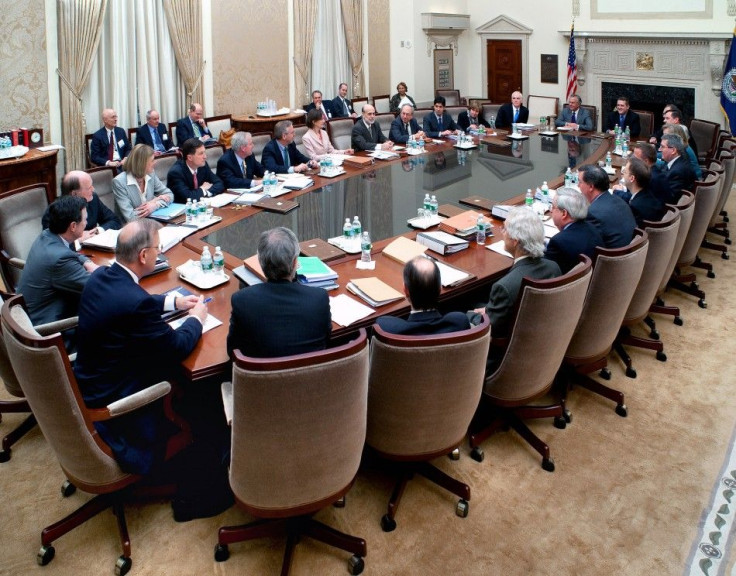FOMC Meeting: No QE3 For Now

Federal Reserve officials said Tuesday they will keep near-term interest rates unchanged at ultra-low levels and, as expected, offered few clues about plans for further easing. The Fed also noted recent strength in the labor market and easing strains in global financial markets.
The statement issued after the day's Federal Open Market Committee meeting said the unemployment rate has declined notably in recent months but the Fed did not change its view that it remains elevated.
Officials also reversed their negative assessment on growth in business fixed income in Tuesday's meeting and noted that household spending and business fixed income investment have both continued to advance.
Although prices of crude oil and gasoline have increased lately, Fed officials expect the spike will only push up inflation temporarily. The Fed said again that inflation will run at or below the rate that it judges most consistent with part of its dual mandate -- which is 2 percent.
Stocks and the yield on 10-year Treasurys jumped after the statement was released, with all three equity indexes surging more than 1 percent Tuesday.
The central bank said its benchmark interest rate will be held between 0 and 0.25 percent at least through late 2014. Richmond Fed President Jeffrey Lacker dissented since he does not expect economic conditions to warrant ultra-low rates until late 2014.
Fed officials are maintaining their policy of reinvesting principal payments from securities holdings and of rolling over maturing Treasury securities at auction, though they are prepared to make necessary adjustments to the holdings to promote a stronger economic recovery while keeping prices stable.
Economic data since the January meeting have been mixed. Jobs data continued to surprise on the upside, most recently a solid payroll report for February. On the other hand, first-quarter gross domestic product -- up 1.6 percent by Bank of America Merrill Lynch's estimate -- is now tracking well below the 3 percent growth rate of the last quarter in 2011. Durable goods, consumer spending and net exports all fell below expectations.
Another round of Fed asset purchases, commonly known as quantitative easing or QE, wasn't mentioned in Tuesday's statement.
It is not clear whether a third round of quantitative easing -- the first two were in 2009-2011 -- even came up during Tuesday's meeting. The minutes to be released on April 3 may provide more insight into a possible QE3.
Under a so-called sterilzed QE, the central bank would first print new money to buy long-term bonds from financial institutions. This action -- standard QE -- expands the Fed's balance sheet. The Fed would then go a step further to drain those reserves by borrowing it back for short periods at low rates.
A major advantage of sterilized quantitative easing is that it doesn't expand the Fed's balance sheet and thereby reduces the risk of triggering runaway inflation by simply printing money and flooding the financial system.
More QE, whether sterilized or not, is not likely before Operation Twist concludes in June, Michael S. Hanson, U.S. economist at Bank of America Merrill Lynch, said in a research note. Operation Twist is a Fed program of buying long-dated Treasurys in an attempt to push down long-term interest rates without expanding the central bank's balance sheet.
Hanson pointed out that the economy is not yet weak enough to warrant more imminent easing.
A third round of quantitative easing has a better chance of becoming reality in this year's second half, once growth has slowed meaningfully, Hanson added.
Market Reactions
Stocks have a history of volatile performances on days when the Fed issues FOMC statements. The S&P 500 has averaged a 0.7 percent gain during the 26 previous Fed days dating back to December 2008, when the central bank implemented its near zero percent interest rate policy, according to Bespoke Investment Group.
During 18 of the past 26 instances, stocks have advanced after the FOMC statement came out.
In late afternoon trading, the S&P 500 was up 11.24 to 1,382.33. The Dow Jones Industrial Average was up 106.64 to 13,066.35, and the tech-heavy Nasdaq had climbed more than 1 percent.
Treasury yields hit new highs for the year on the FOMC statement's relatively positive take on the U.S. economy. The yield on the benchmark 10-year notes rose to 2.12.
The ICE dollar index, which measures the greenback against a basket of major currencies, rose 0.44 percent to 80.21.
© Copyright IBTimes 2024. All rights reserved.






















